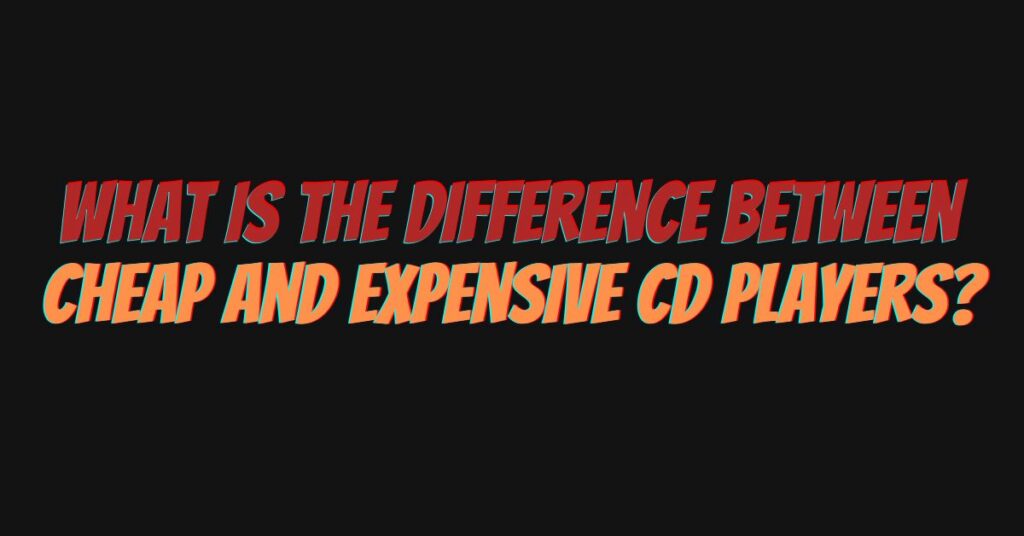CD players have been a staple in audio systems for decades, delivering digital music playback with precision and clarity. When shopping for a CD player, you may encounter a wide range of options, spanning from budget-friendly choices to high-end, expensive models. This article delves into the key distinctions between cheap and expensive CD players, helping you make an informed choice that aligns with your audio needs and budget.
1. Audio Quality
– Cheap CD Players: Budget CD players often feature basic digital-to-analog converters (DACs) and components. While they can provide decent sound quality, they may lack the refinement and precision found in more expensive counterparts. Sound may exhibit limitations in terms of clarity, detail, and depth.
– Expensive CD Players: High-end CD players are designed with superior DACs and components that are meticulously crafted for exceptional audio quality. These players tend to offer greater clarity, more detailed sound, and a wider soundstage, providing a richer and more immersive listening experience.
2. Build Quality
– Cheap CD Players: Inexpensive models may prioritize cost savings in their construction. This can lead to a compromise in build quality, with less robust casings and components that may be susceptible to vibrations and interference, potentially affecting sound quality.
– Expensive CD Players: Expensive CD players invest in high-quality materials and construction. They often feature vibration-resistant designs and sturdy casings, reducing the risk of external interference and delivering a more stable and precise audio output.
3. DAC Quality
– Cheap CD Players: Low-cost CD players may incorporate basic or generic DACs. These DACs can deliver satisfactory sound quality but often lack the advanced features and processing capabilities found in pricier players.
– Expensive CD Players: High-end CD players use top-tier DACs that offer more precise digital-to-analog conversion. These advanced DACs may support high-resolution audio formats and provide exceptional signal-to-noise ratios, resulting in cleaner and more accurate audio reproduction.
4. Component Quality
– Cheap CD Players: Budget models often use standard, mass-produced components, which can lead to a compromise in performance and longevity.
– Expensive CD Players: High-end CD players employ premium components, such as capacitors, resistors, and op-amps, that are carefully selected for their quality and impact on sound reproduction.
5. Extra Features
– Cheap CD Players: Entry-level models may focus solely on CD playback, providing basic features like track skipping and play/pause functions.
– Expensive CD Players: Premium CD players may offer advanced features such as digital inputs, Bluetooth connectivity, headphone amplifiers, upsampling, and superior error correction, enhancing versatility and performance.
6. Aesthetics and Design
– Cheap CD Players: Budget models may prioritize functionality over aesthetics, resulting in basic, utilitarian designs.
– Expensive CD Players: High-end CD players often exhibit stylish, well-crafted designs that can complement the aesthetics of your audio setup. Attention to detail in their design is a common hallmark.
Conclusion
The differences between cheap and expensive CD players are evident in audio quality, build quality, component quality, DAC performance, extra features, and design aesthetics. While affordable CD players can provide satisfactory performance, they may not match the exceptional audio quality and luxurious features offered by their more expensive counterparts.
Ultimately, the choice between a cheap and an expensive CD player depends on your budget and audio preferences. If you prioritize pristine sound quality, durability, and advanced features, investing in a high-end CD player may be a wise decision. However, budget CD players can still offer a respectable music experience and are a cost-effective option for those seeking a more modest audio solution.

